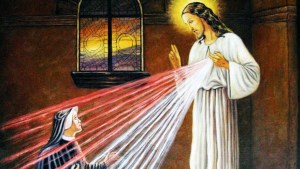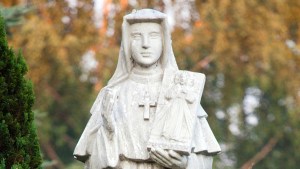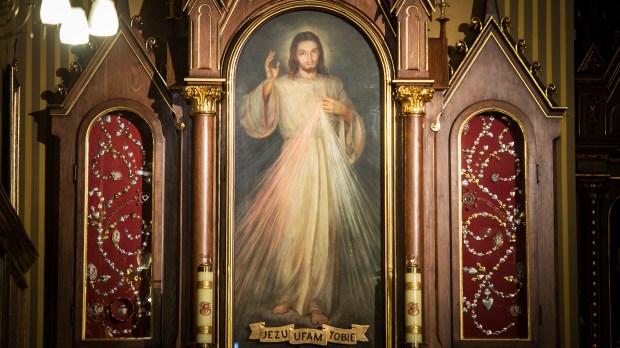For many centuries, the Second Sunday of Easter was nicknamed Low Sunday, in contrast to the High Sunday of Easter. Additionally, the newly baptized would wear their baptismal gowns during the eight days of the Easter Octave. According to the Catholic Encyclopedia, the Second Sunday of Easter “was consequently known as dominica in albis(deponendis), the Sunday of the (laying aside of the) white garments.”
However, in recent years this same Sunday has been given another celebration: Divine Mercy Sunday.
Renamed in the year 2000
In 2000, St. John Paul II canonized the Polish religious mystic Faustina Kowalska, and during his homily officially designated the Second Sunday of Easter “Divine Mercy Sunday.”
John Paul II did this to endorse Faustina’s private revelations as well as to put more emphasis on Divine Mercy in the 21st century. He explained during his homily, “Divine Mercy reaches human beings through the heart of Christ crucified: ‘My daughter, say that I am love and mercy personified,’ Jesus will ask Sr. Faustina (Diary, p. 374). Christ pours out this mercy on humanity though the sending of the Spirit who, in the Trinity, is the Person-Love. And is not mercy love’s ‘second name’ (cf. Dives in misericordia, n. 7), understood in its deepest and most tender aspect, in its ability to take upon itself the burden of any need and, especially, in its immense capacity for forgiveness? Today my joy is truly great in presenting the life and witness of Sr. Faustina Kowalska to the whole Church as a gift of God for our time … Jesus told Sr Faustina: ‘Humanity will not find peace until it turns trustfully to divine mercy’ (Diary, p. 132).”
The Polish pope then went on to proclaim, “It is important then that we accept the whole message that comes to us from the word of God on this Second Sunday of Easter, which from now on throughout the Church will be called ‘Divine Mercy Sunday.’”
Jesus requested this “name change”
Jesus requested that this Second Sunday of Easter be named “Divine Mercy Sunday” in a vision to Saint Faustina that she wrote down in her Diary.
On one occasion, I heard these words: My daughter, tell the whole world about My Inconceivable mercy. I desire that the Feast of Mercy be a refuge and shelter for all souls, and especially for poor sinners. On that day the very depths of My tender mercy are open. I pour out a whole ocean of graces upon those souls who approach the fount of My mercy. The soul that will go to Confession and receive Holy Communion shall obtain complete forgiveness of sins and punishment. On that day all the divine floodgates through which grace flow are opened. Let no soul fear to draw near to Me, even though its sins be as scarlet. My mercy is so great that no mind, be it of man or of angel, will be able to fathom it throughout all eternity. Everything that exists has come forth from the very depths of My most tender mercy. Every soul in its relation to Me will contemplate My love and mercy throughout eternity. The Feast of Mercy emerged from My very depths of tenderness. It is My desire that it be solemnly celebrated on the first Sunday after Easter. Mankind will not have peace until it turns to the Fount of My Mercy. (Diary 699)
Yes, the first Sunday after Easter is the Feast of Mercy, but there must also be deeds of mercy, which are to arise out of love for Me. You are to show mercy to our neighbors always and everywhere. You must not shrink from this or try to absolve yourself from it. (Diary 742)
Both Pope Benedict XVI and Pope Francis have affirmed this new tradition and the new feast has become an official part of the Catholic Church’s liturgical calendar.

Read more:
Divine Mercy image on the front door a reminder of God’s protection

Read more:
St. Faustina added to Roman calendar for October 5 memorial

